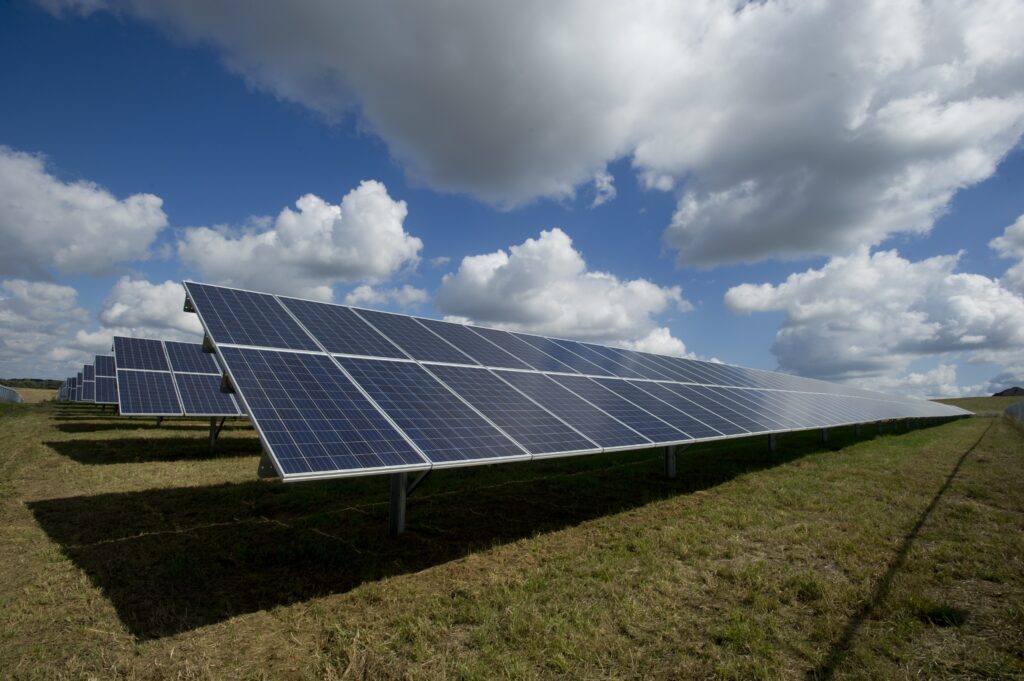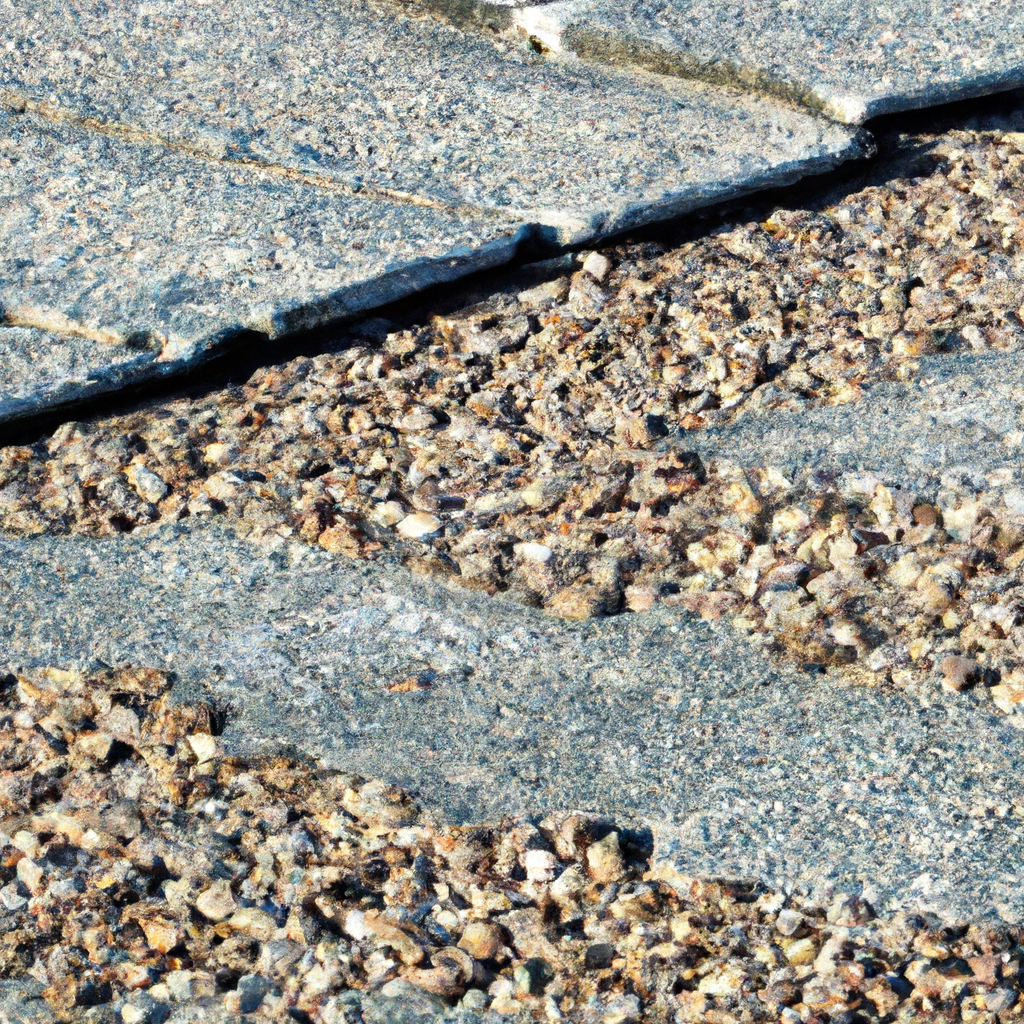Have you ever wondered why commercial roofs are often covered in gravel? It may seem like an odd choice, but there’s actually a good reason behind it. The gravel serves as a protective layer, helping to extend the lifespan of the roof and prevent damage. In this article, we’ll explore the benefits of gravel on commercial roofs and why it’s such a common sight. So, if you’ve been curious about those gravel-covered roofs, keep reading to find out more. Gravel plays a crucial role in protecting commercial roofs from various elements and ensuring their durability and longevity. It serves as a shield against harmful UV rays, provides enhanced durability, improves insulation, and prevents debris accumulation.
Protection against UV rays
Commercial roofs are exposed to the sun’s UV rays on a daily basis. Over time, these rays can cause significant damage to the roofing materials, leading to cracks, warping, and leaks. However, when gravel is applied to the roof’s surface, it acts as a barrier, reflecting the UV rays and preventing them from penetrating the roof’s membrane. This helps to preserve the integrity of the roofing system and extends its lifespan.
Enhanced durability
Gravel adds an extra layer of protection to the commercial roof, making it more resistant to wear and tear. It acts as a buffer against harsh weather conditions, such as hail and heavy rainfall, preventing direct impact on the roofing materials. Additionally, gravel helps distribute the weight evenly across the roof, reducing the risk of structural damage and increasing the overall durability of the roof.
Improved insulation
Insulation is an essential factor in maintaining a comfortable and energy-efficient interior environment. Gravel helps improve insulation on commercial roofs by reducing heat transfer. The small gaps between the gravel stones create pockets of air, which act as insulation material, preventing heat from escaping during colder months and minimizing heat absorption during hotter months. This insulation effect can significantly reduce energy costs by minimizing the need for heating and cooling.
Prevention of debris accumulation
Debris accumulation can pose a significant threat to the performance and lifespan of commercial roofs. Leaves, twigs, and other debris can block drainage systems, leading to water pooling and potential leaks. Gravel acts as a barrier against debris, preventing it from accumulating on the roof’s surface and impeding proper water flow. This helps to maintain the roof’s functionality and prevents costly damages that could result from clogged drains or water infiltration.
Now that we understand the importance of gravel on commercial roofs, let’s explore the types of commercial roofs that commonly utilize gravel.
Types of Commercial Roofs That Use Gravel
Built-Up Roofing Systems
Built-up roofing systems, also known as BUR, are one of the most common types of commercial roofs that incorporate gravel. These roofs consist of multiple layers of bitumen and reinforced fabric. The final layer, known as the cap sheet, is protected by a layer of gravel. The gravel provides a protective barrier against UV rays, enhances the roof’s durability, and helps to hold the roofing materials in place.
Modified Bitumen Roofing Systems
Modified bitumen roofing systems are another popular choice for commercial roofs, particularly those with low-slope or flat configurations. These roofs are composed of a hybrid mix of asphalt and rubber modifiers. To protect the bitumen layers, gravel is applied to the top surface. The gravel acts as a ballast, holding the roofing materials in place, and provides added protection against weathering and foot traffic.
EPDM Roofing Systems
EPDM (ethylene propylene diene terpolymer) roofing systems are known for their outstanding durability and resistance to UV rays, ozone, and weathering. Gravel is often used in EPDM roofing systems as a protective layer, adding an additional level of defense against extreme weather conditions and ensuring the longevity of the roof.
TPO Roofing Systems
TPO (thermoplastic olefin) roofing systems are becoming increasingly popular in commercial construction due to their cost-effectiveness and energy efficiency. These single-ply membranes are usually reinforced with polyester or fiberglass. Gravel is not typically required for TPO roofing systems, as they are designed to be highly resistant to UV rays and weathering. However, in some cases, gravel may still be added as an extra protective measure.
Now that we have explored the types of commercial roofs that commonly utilize gravel, let’s delve into the composition of gravel in commercial roofs.
Composition of Gravel in Commercial Roofs
Size and shape of gravel
The size and shape of gravel used in commercial roofs play a crucial role in its effectiveness. Generally, gravel used in commercial roofing ranges from 1/4 inch to 3/4 inch in size. Smaller-sized gravel provides a smoother surface, while larger-sized gravel offers a more textured appearance. The shape of the gravel particles can vary, with rounded or angular options available. The choice of size and shape depends on factors such as aesthetics, functionality, and local building codes.
Types of gravel material
Gravel used in commercial roofs can be sourced from various materials, including limestone, granite, and river rock. Each material offers different aesthetic qualities and durability levels. Limestone gravel is often chosen for its affordability and versatility, while granite gravel is preferred for its strength and longevity. River rock gravel provides a more natural and decorative look, making it a popular choice for commercial roofs in aesthetically-driven environments.
Layer thickness and weight
The thickness and weight of the gravel layer applied to commercial roofs can vary depending on several factors, including the type of roofing system and local climate conditions. In general, a layer thickness of 1-1.5 inches is recommended. The weight of the gravel layer is typically measured in pounds per square foot (psf) and can range from 5 psf to 15 psf. These measurements are carefully determined to ensure optimal protection and performance of the commercial roof while considering the structural capacity of the building.
Now that we understand the composition of gravel in commercial roofs, let’s walk through the installation process of gravel on commercial roofs.

Installation Process of Gravel on Commercial Roofs
Preparation of the roof surface
Before the gravel is applied, it is crucial to properly prepare the roof surface. This involves cleaning the surface of any debris or contaminants, ensuring a clean and solid base for the gravel. Any necessary repairs or reinforcement should also be done at this stage to address any roofing issues.
Application of base layer
The base layer serves as a protective barrier between the roof’s membrane and the gravel layer. It helps prevent the direct contact of the gravel with the roofing materials, reducing the risk of punctures or damage. The base layer is typically composed of a bitumen-based product or a self-adhering membrane. It is applied evenly and securely to the entire roof surface.
Placement of gravel layer
Once the base layer is in place, the gravel layer can be installed. The gravel is typically spread evenly across the roof using specialized equipment, such as spreaders or shovels. Care is taken to ensure an even distribution of gravel, covering the entire roof surface uniformly. The layer thickness and weight are carefully maintained according to the specifications and requirements of the commercial roof.
Finishing touches
After the gravel layer is evenly spread, any excess gravel is removed from the roof surface, and the surrounding areas are cleaned. The edges and seams of the roofing system may require additional seals or finishing touches to ensure a watertight and secure installation. Regular inspections should be conducted to ensure the integrity and quality of the gravel installation.
Now that we have discussed the installation process, let’s explore the benefits of having gravel on commercial roofs.
Benefits of Gravel on Commercial Roofs
Protection against extreme weather conditions
Commercial roofs are exposed to various weather elements, including wind, rain, hail, and snow. Gravel acts as a protective layer, absorbing the impact of these elements and preventing direct damage to the roofing materials. This protection helps to extend the lifespan of the roof and significantly reduce maintenance and repair costs.
Reduction of energy costs
Proper insulation is essential for maintaining a comfortable indoor environment and reducing energy consumption. Gravel on commercial roofs improves insulation by creating air pockets that prevent heat transfer. This insulation effect helps regulate temperature fluctuations inside the building, reducing the need for excessive heating or cooling. As a result, energy costs are significantly reduced, contributing to long-term cost savings.
Prevention of roof leaks
Roof leaks can be a costly and disruptive issue for commercial properties. Gravel acts as a barrier, preventing water from seeping into the roofing materials and causing leaks. The combination of the gravel layer and the underlying waterproofing system ensures a watertight seal and protects the interior of the building from water damage.
Increased lifespan of the roof
The additional layer of protection provided by gravel significantly extends the lifespan of commercial roofs. By shielding the roofing materials from UV rays, reducing wear and tear, improving insulation, and preventing water ingress, gravel enhances the overall durability and performance of the roof. This increased lifespan translates into long-term cost savings for building owners and managers.
Now that we understand the benefits of having gravel on commercial roofs, let’s explore the necessary maintenance steps to ensure its effectiveness.

Gravel Maintenance for Commercial Roofs
Regular inspection and cleaning
Regular inspections are essential to identify any signs of damage, displacement, or wear in the gravel layer. Inspecting the roof on a routine basis allows for early detection of potential issues, enabling prompt repairs. Additionally, cleaning the gravel layer periodically helps remove any debris or sediment that may accumulate and obstruct proper water flow.
Repairing damaged or displaced gravel
If any gravel stones are damaged, cracked, or displaced, it is important to repair or replace them promptly. Damaged or displaced gravel can compromise the integrity of the roof’s protective barrier and expose the roofing materials to potential damage. Quick repairs help maintain the effectiveness of the gravel layer and ensure the continued protection of the commercial roof.
Preventing ponding of water
Ponding of water occurs when water accumulates and forms pools on the roof surface. This can be detrimental to the performance of the gravel layer, as excessive water can cause erosion, displacement, or damage. Proper drainage systems and regular maintenance can help prevent ponding by ensuring that water flows efficiently off the roof surface.
Now that we have discussed gravel maintenance, let’s explore the environmental impact of using gravel on commercial roofs.
Environmental Impact of Gravel on Commercial Roofs
Heat island effect reduction
The heat island effect refers to the phenomenon where urban areas experience significantly higher temperatures than surrounding rural areas due to the absorption and retention of heat by buildings and pavements. Gravel on commercial roofs helps mitigate this effect by reflecting a significant portion of solar radiation back into the atmosphere, reducing the overall temperature of the roof and the building’s surroundings.
Water runoff management
Gravel plays a crucial role in managing water runoff from commercial roofs. It helps slow down the flow of rainwater, allowing it to be absorbed into the ground more efficiently rather than overwhelming drainage systems. This can help prevent flooding and reduce the strain on municipal stormwater systems, ultimately contributing to better water management practices.
Recycling and reusing gravel
Gravel used on commercial roofs can often be recycled and reused, minimizing the need for extraction of new materials. After its lifespan on a particular roof, gravel can be collected, cleaned, and repurposed for other construction projects. This recycling and reusing process reduces waste and minimizes the environmental impact associated with gravel production.
Now that we understand the environmental impact of gravel on commercial roofs, let’s discuss its durability.

Durability of Gravel in Commercial Roofing
Resistance to weathering and erosion
Gravel is highly resistant to weathering and erosion, making it an ideal material for commercial roofs. It can withstand extreme weather conditions such as heavy rain, strong winds, and hailstorms without displaying significant signs of wear or damage. The durability of gravel ensures the long-lasting performance of commercial roofs, even in challenging environments.
Protection against roof damage
Commercial roofs are exposed to various potential sources of damage, including foot traffic, falling objects, and extreme weather events. The presence of gravel acts as a protective layer, absorbing the impact and reducing the risk of direct damage to the underlying roofing materials. This protection helps maintain the integrity of the roof and extends its lifespan.
Long-lasting performance
Gravel is known for its longevity and ability to withstand the test of time. Once properly installed and maintained, a gravel layer on a commercial roof can provide decades of reliable and effective protection. Its durability and resistance to wear and tear make it a cost-effective and sustainable choice for commercial roofing applications.
Now that we understand the durability of gravel, let’s discuss the cost considerations associated with its installation and maintenance.
Cost Considerations of Gravel on Commercial Roofs
Initial installation cost
The installation of gravel on commercial roofs requires additional materials, labor, and equipment, which can impact the overall cost of the roofing project. Compared to other roofing options, such as single-ply membranes, the initial installation cost of gravel can be higher. However, it is important to consider the long-term savings and benefits that come with the use of gravel, such as increased roof lifespan, reduced maintenance, and energy cost savings.
Maintenance and repair expenses
Like any roofing system, gravel roofs require regular maintenance and occasional repairs. Periodic inspections, cleaning, and repairs can incur additional expenses over time. However, it is crucial to note that the proper maintenance of gravel roofs can help prevent more significant damages and minimize the need for costly repairs in the long run. The cost of maintenance and repairs should be factored into the overall budget for commercial roof upkeep.
Potential cost savings
Despite the initial and ongoing costs associated with gravel on commercial roofs, there are potential cost savings to consider. The protection provided by the gravel layer can significantly reduce the need for extensive repairs or replacements throughout the roof’s lifespan. Additionally, the improved insulation properties of gravel roofs can lead to substantial energy cost savings by minimizing the need for excessive heating or cooling. These long-term cost savings can offset the initial investment and make gravel a financially advantageous option for commercial roofing.
Now that we have discussed the cost considerations, let’s explore some alternatives to gravel on commercial roofs.

Alternatives to Gravel on Commercial Roofs
Coatings and paints
Coatings and paints are popular alternatives to gravel for commercial roofs. These products are applied directly to the roof’s surface and provide protection against UV rays, water damage, and other environmental factors. Coatings and paints can be customized to suit specific roofing materials and aesthetic preferences, offering a wide range of options for commercial property owners.
Green roof systems
Green roof systems, also known as vegetative roofs or living roofs, have gained popularity due to their environmental benefits and aesthetic appeal. Instead of gravel, these systems incorporate vegetation, soil, and drainage layers. Green roofs offer excellent insulation, stormwater management, and biodiversity enhancement. However, their installation requires specialized expertise, and their maintenance can be more complex compared to traditional gravel roofs.
Paver systems
Paver systems involve the installation of individual pavers on the roof’s surface. These pavers, made from materials such as rubber, concrete, or stone, create a durable and aesthetically pleasing rooftop. Paver systems offer excellent protection against UV rays, foot traffic, and heavy winds. They also allow for easy access to the roof for maintenance and repair purposes. However, paver systems can be more expensive and require professional installation.
Liquid-applied membranes
Liquid-applied membranes are seamless roofing systems that are sprayed or rolled onto the roof’s surface. These membranes are usually made from synthetic rubber or acrylic and offer excellent waterproofing capabilities. Liquid-applied membranes provide a sleek and seamless finish, reducing the risk of leaks and improving the overall aesthetics of the commercial roof. However, they may not offer the same level of protection against extreme weather conditions as gravel roofs.
While gravel is a widely used and versatile option for commercial roofs, these alternatives offer different features and benefits that may better suit specific project requirements or preferences.
In conclusion, gravel plays a significant role in the functionality, durability, and environmental impact of commercial roofs. It provides protection against UV rays, enhances roof durability, improves insulation, and prevents debris accumulation. Gravel is commonly used in various commercial roofing systems, and its composition includes factors such as size, shape, material, and layer thickness. The installation process involves surface preparation, application of a base layer, proper placement of gravel, and finishing touches. The benefits of having gravel on commercial roofs include protection against extreme weather, reduction of energy costs, prevention of roof leaks, and increased roof lifespan. Regular maintenance is essential to ensure the longevity and effectiveness of gravel roofs. Gravel on commercial roofs also has positive environmental impacts, such as reducing the heat island effect, managing water runoff, and promoting the recycling and reusing of materials. Gravel is a durable option for commercial roofing, providing resistance to weathering, protection against roof damage, and long-lasting performance. Cost considerations include initial installation costs, ongoing maintenance expenses, and potential cost savings in energy and repairs. Additionally, there are alternative roofing options, such as coatings and paints, green roof systems, paver systems, and liquid-applied membranes, that offer different features and benefits. Ultimately, understanding the importance, composition, installation, benefits, maintenance, environmental impact, durability, cost considerations, and alternatives of gravel on commercial roofs can help stakeholders make informed decisions and ensure the longevity and effectiveness of their roofing systems.